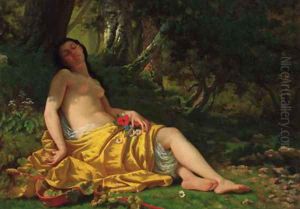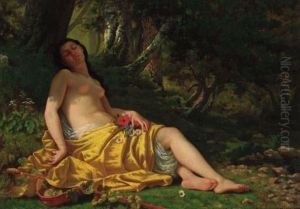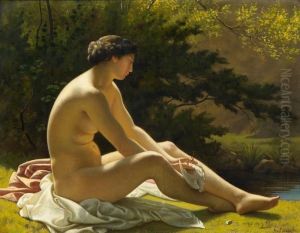Alfred-Charles Foulongne Paintings
Alfred-Charles Foulongne was a 19th-century French painter known for his portraits and historical genre scenes. Born on September 22, 1822, in Beziers, France, Foulongne showed an early talent for art which led him to pursue formal training. He studied under the tutelage of influential artists of the time, including Alexandre Cabanel, a fellow Béziers-born painter who had a significant influence on Foulongne's style and career.
Foulongne's work was rooted in the academic tradition, reflecting the conventions and techniques that were taught at the École des Beaux-Arts in Paris, where he likely spent some time honing his skills. During his career, he exhibited at the Paris Salon, the official art exhibition of the Académie des Beaux-Arts in Paris. This was the most prestigious place for artists to show their work during the 19th century, and having the opportunity to exhibit there was a testament to Foulongne's skill and the respect he had garnered among his peers.
His paintings often depicted scenes from history with a romanticized flair, a common trend among academic artists of his time. Foulongne's portraits showcased his ability to capture the likeness and character of his subjects, which included notable figures of his day as well as more personal, intimate representations of individuals from his own circle.
Despite his talent and the quality of his work, Alfred-Charles Foulongne did not gain the same level of fame as some of his contemporaries. His works, however, continue to be of interest to art historians and collectors who appreciate 19th-century French academic painting. Foulongne's attention to detail, his use of color, and the lifelike quality of his portraits are particularly noted.
Alfred-Charles Foulongne passed away in 1890, leaving behind a modest but impactful body of work. His paintings can be found in various regional museums in France and in private collections. Although he may not be a household name, Foulongne's contributions to the art of his time remain a part of the rich tapestry of 19th-century French painting.


